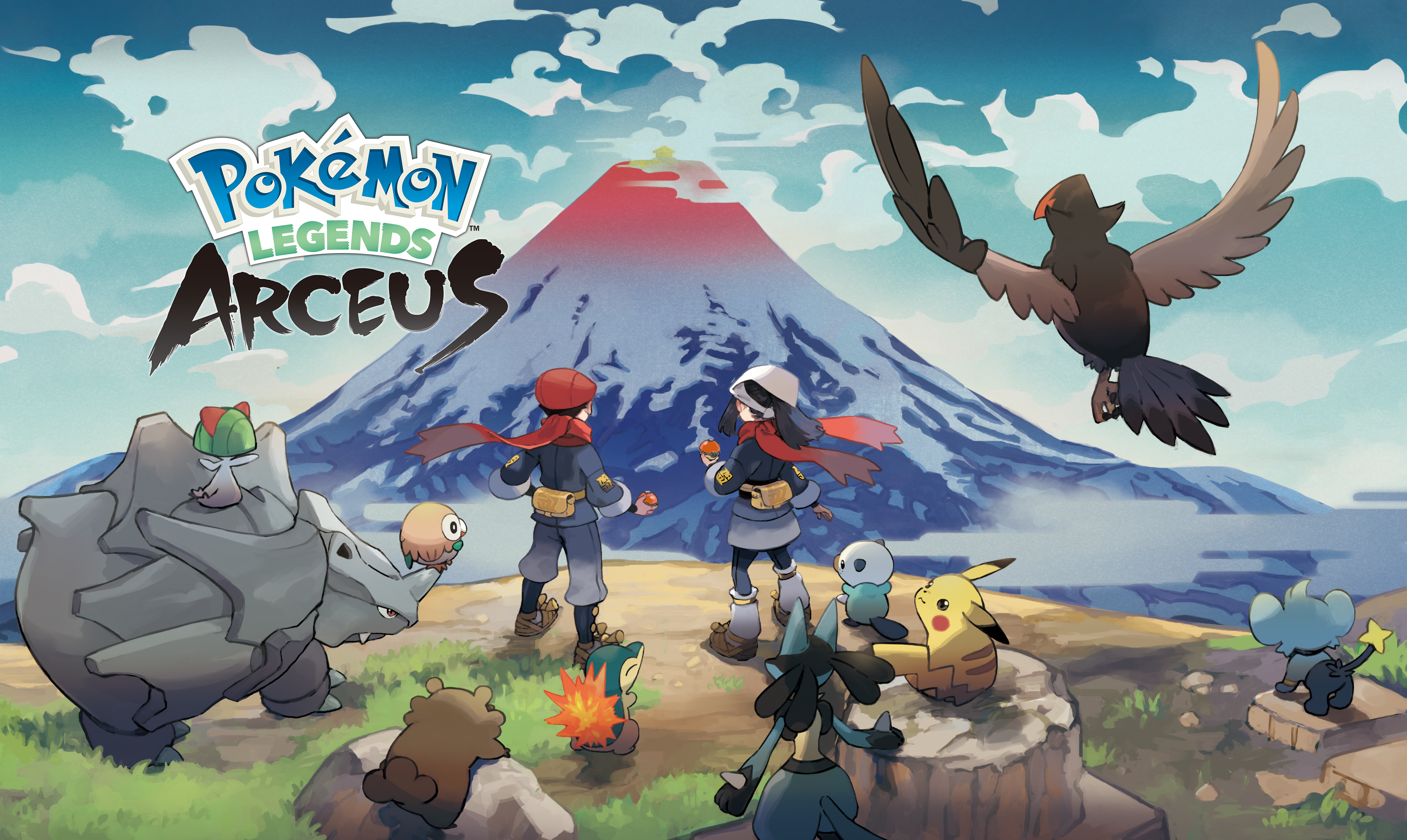I know I wasn’t the only person who expected Pokémon Legends: Arceus to basically be Pokémon: Breath of the Wild. Between the overall visual style and the simple fact that Legends trades the ultra-modern setting of the traditional Pokémon game for more of an “ancient world” environment, this was an easy joke to make.
However, after only a couple of hours of gameplay, I quickly found this comparison fell flat. I wasn’t Link performing acts of derring-do across Hyrule. Instead, I was a man apart, a stranger just trying to make his way through a landscape teeming with exotic, dangerous creatures and mistrustful but ultimately helpful locals. I was Geralt of Rivia, and this was Pokémon: The Wild Hunt.
Attitudes, Environments, and the World That Was
Even more so than its shift to the past, the first thing that feels truly foreign about adventuring in the Hisui region—both in the central hub of Jubilife Village and beyond—is the prevailing attitude regarding Pokémon. Historically speaking, Pokémon Legends: Arceus marks the earliest instance of benevolent human/Pokémon interaction we’ve yet experienced. Unlike in more modern tales, not every eager pre-teen is ready to hit the road with a brand new animal companion. As such, your character, as someone with an almost preternatural understanding of capturing and training Pocket Monsters, is something of an oddity.
Despite some initial suspicion, this knack for tossing those new-fangled Poké Balls makes you the obvious choice to help Professor Laventon of the Galaxy Team’s Survey Corps compile the first-ever Pokédex. However, as Pokémon catching isn’t what you’d call an exact science in these olden days, this mission is fraught with danger and, of course, more than a little mystery.
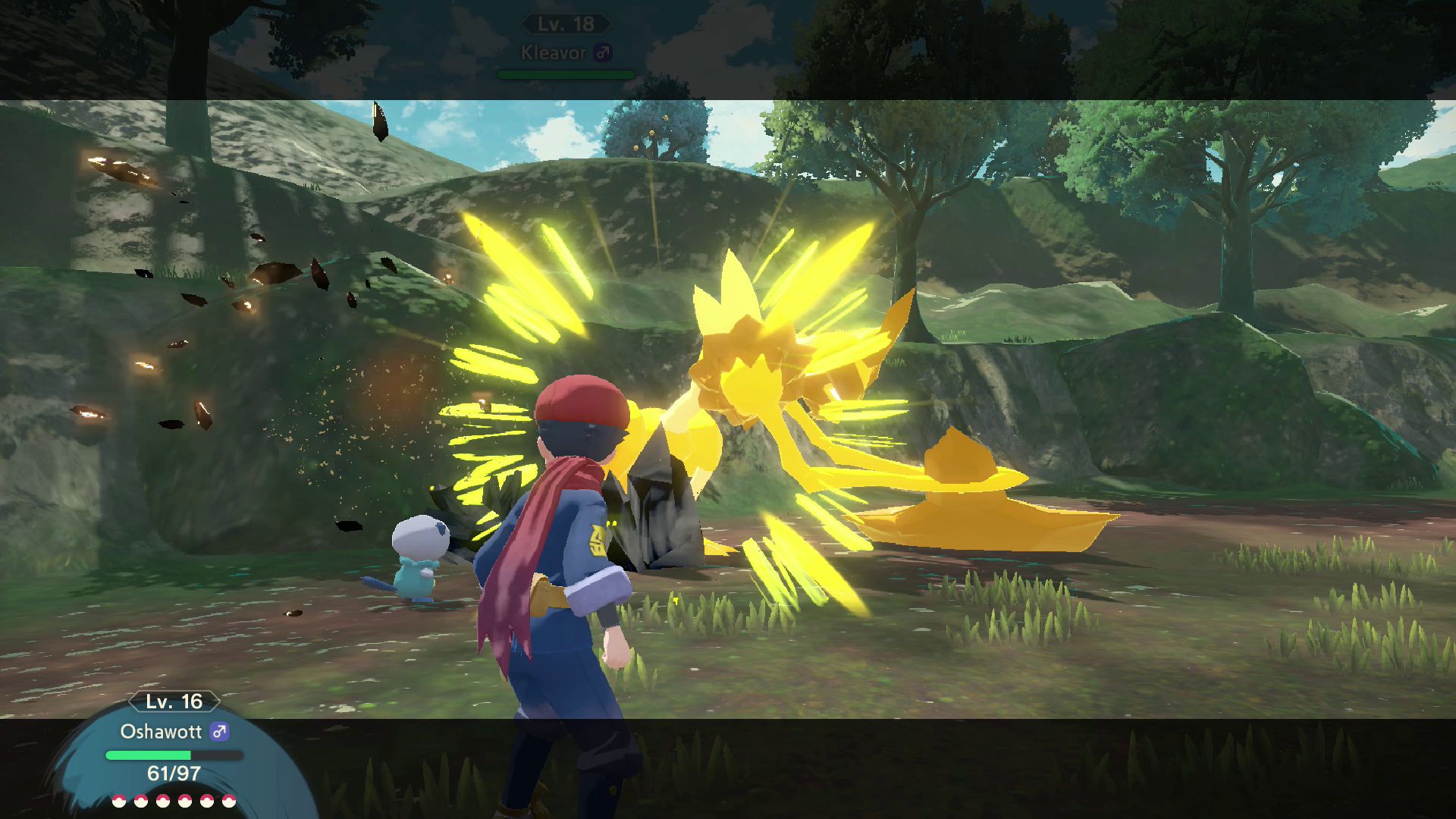
Alongside uncanny names and phrases like the aforementioned “Galaxy Team,” savvy Pokémon Masters will notice many such ancient analogs to the movers and shakers of more contemporary Pokémon titles. For example, the Galaxy Team shares Hisui with the Diamond and Pearl Clans. In fact, it’s your mission to quell the Noble Pokémon that these clans and their wardens revere and protect that truly drives the narrative.
Crafting and Storage (Or a Lack Thereof)
Unsurprisingly, this mission takes the player across a widening array of distinct environments, with each ecosystem hosting more diverse Pokémon. Yet Pokémon aren’t the only natural resources at your disposal.
Legends: Arceus puts a special emphasis on crafting items using things found in and around the trees, tall swaying grasses, and sheer cliff sides of Hisui. For example, you can combine an Apricorn and a Tumblestone to make a simple Poké Ball.
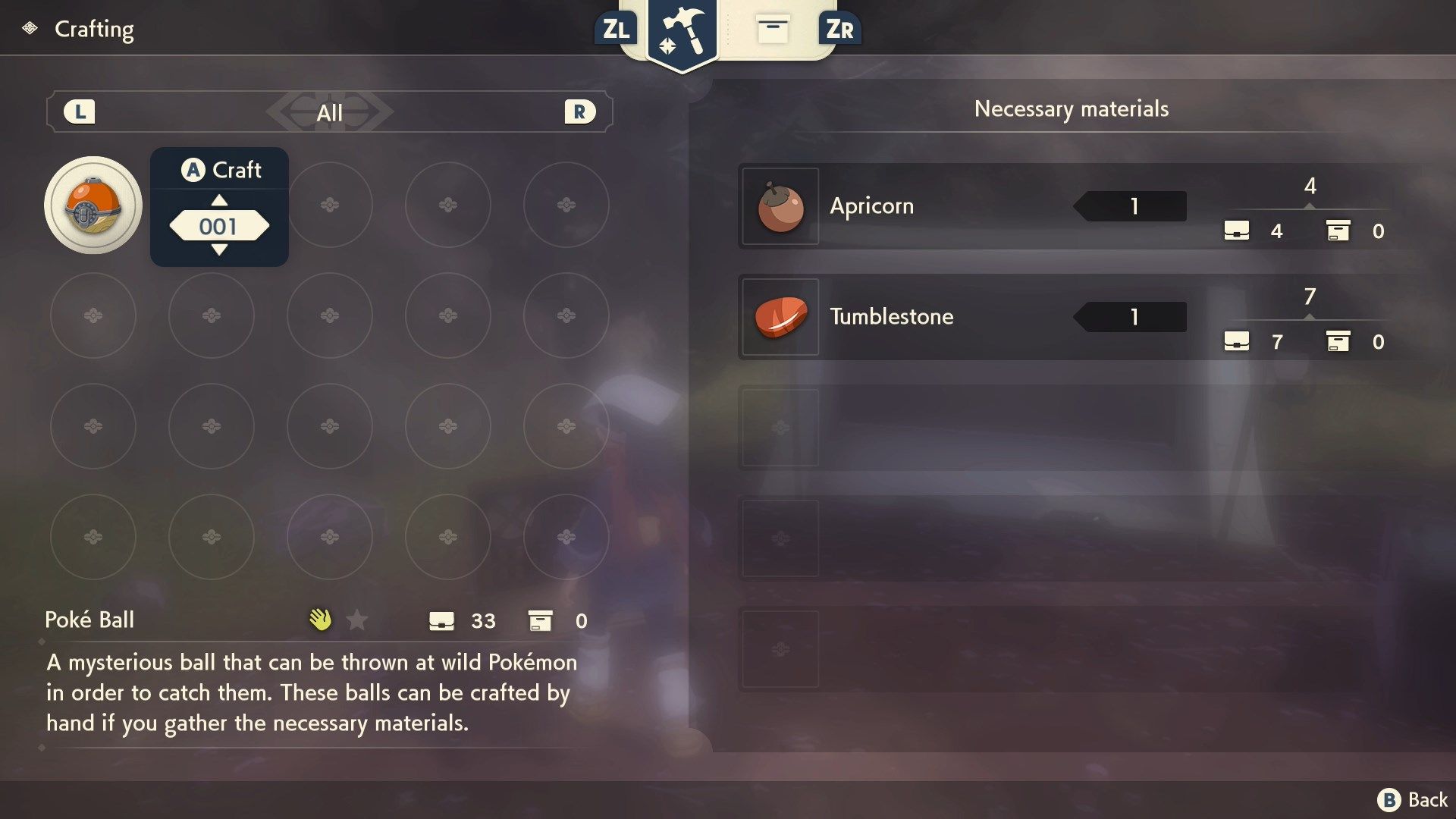
More and better Poké Ball recipes can be learned as you progress, as can those for other helpful items like potions and smoke bombs–the latter being especially important when you’re looking to catch your quarry unawares.
In Jubilife Village and the surrounding base camps, you can find workbenches at which to craft. The crafting itself is logical, intuitive, and plays nicely into the old-world DIY aesthetic of the game, with the only drawback being that of storage. You have a comparatively limited amount of space for “everyday items,” those being raw components and the resulting craftables.
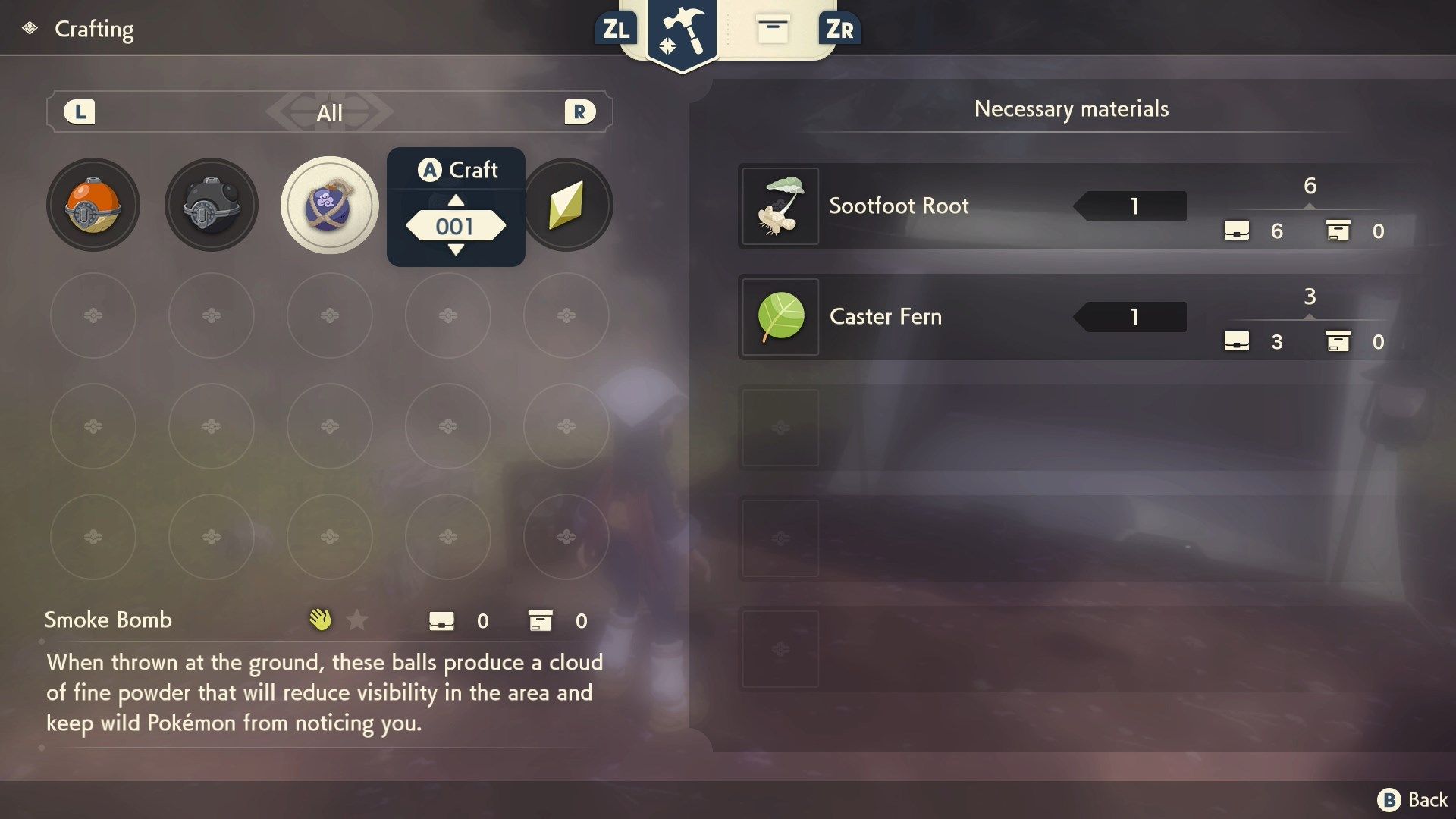
You can buy more storage slots, but it quickly becomes almost prohibitively expensive and, inevitably, I found myself using my satchel’s hot button (the up arrow) to discard some components so I could harvest others even late in the game.
Movement, Terrain, and the Skyrim Problem
Movement in and around Hisui is very traditional in the open-world action game sense. The map, easily accessed using the – button, is big and winding and wild. Early on, I often found myself walking around in circles, trying to locate an available but not exactly prominent bridge across a deep river or canyon pass through a just-too-tall hillside.
All this terrain is nicely rendered in the game’s gauzy, evocative style, and eventually, new paths and manners of travel become available that unlock even more of the already impressive countryside. In the beginning, though, I was regularly faced with what I still think of as the Skyrim problem.
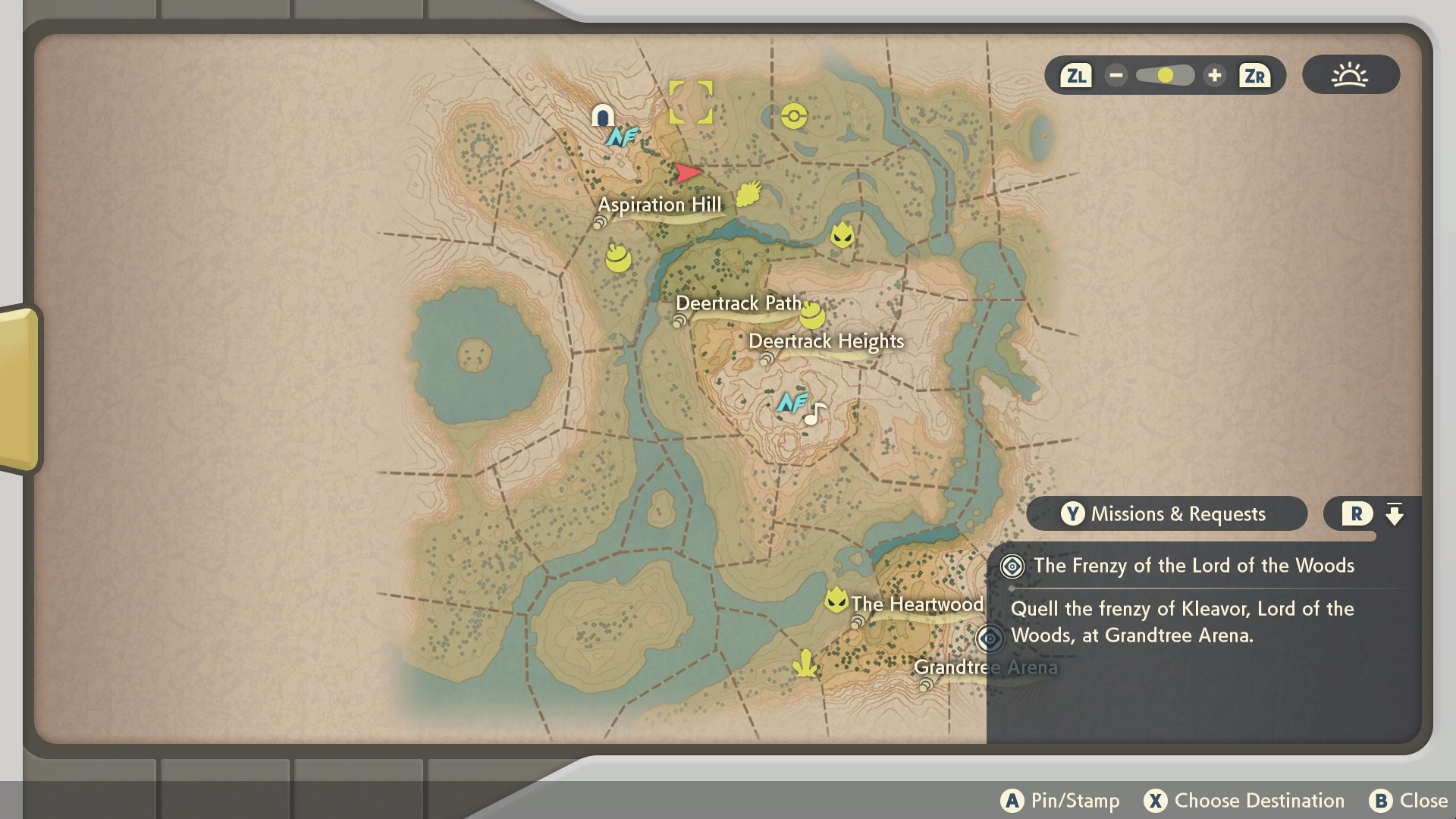
I could see where I wanted to go—there was a nice mission indicator on that helpful map—but the shortest point between A and B inevitably led me to an insurmountable obstacle. But that didn’t stop me from trying to negotiate an almost walkable hill (to no avail) or nearly drowning in a slightly-too-deep waterway.
So Many Pokémon, So Many Buttons
More than any other aspect of Pokémon Legends, it’s the battle system that truly feels the most unfamiliar. Unlike that perfectly hewn, single viewpoint battle screen of the core titles, this one is more loosey-goosey, even going so far as allowing your trainer to move around in the frame.
Approaching a Pokémon in this open world generally begins with seeing one or more in the distance. As you get closer, you can use the ZL trigger to focus on the closest ‘Mon, which will appear in… well, sort of an aiming reticle or crosshairs and also a… set of parenthesis.
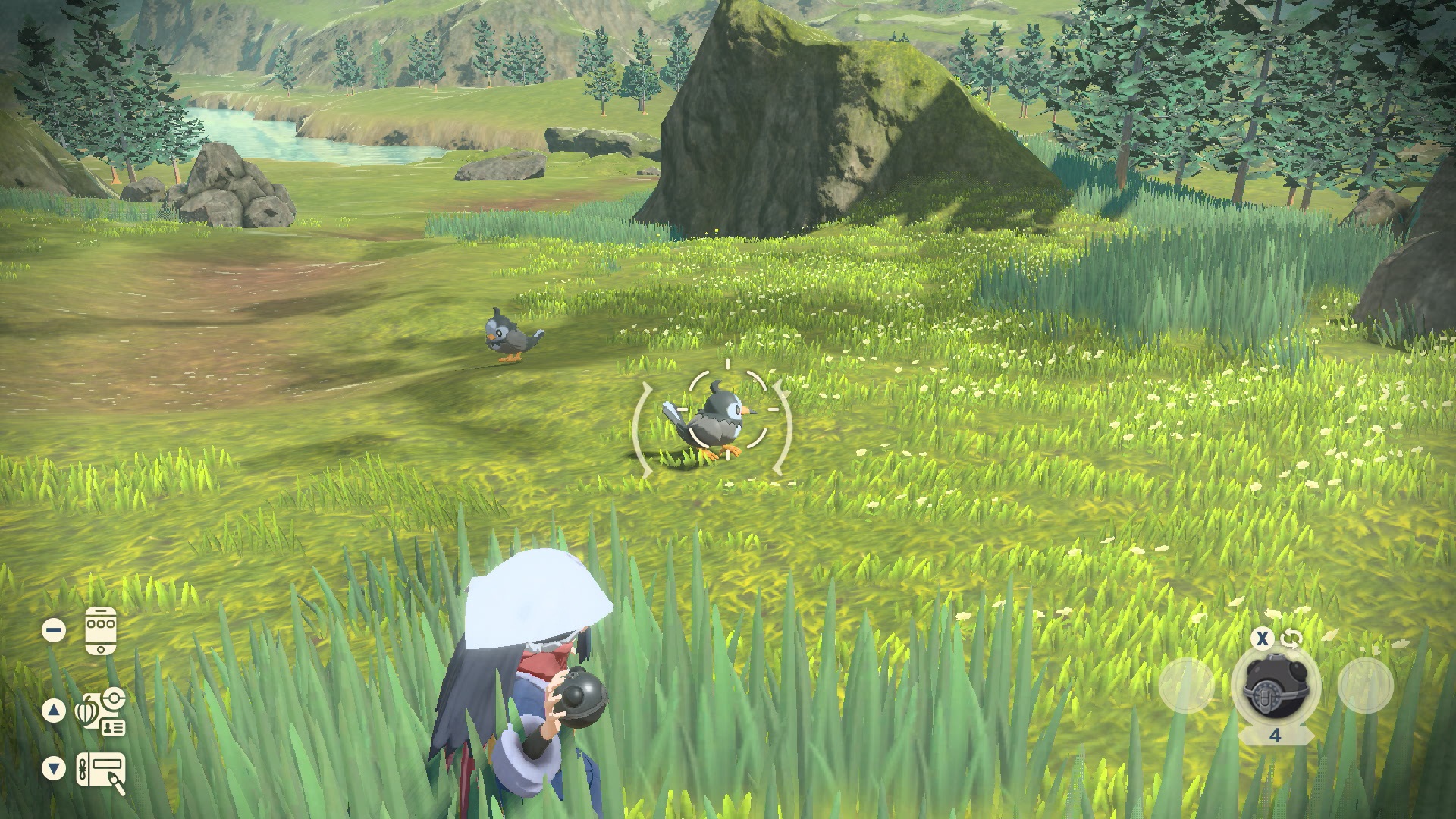
If the monster begins to sense you, a diamond-shaped indicator will appear overhead, complete with color-coding and one or more ascending arrows indicating how easy or difficult this creature will be to catch. You can crouch (using B) or employ tall grass/strategically placed smoke bombs to help conceal yourself and toss that Poké Ball unseen, but if that diamond icon becomes an exclamation point, you’ve been made. At this point it is fight or flight; meeker creatures will run while the bigger, stronger Pokémon will attack.
When I say “bigger” and “stronger,” I mean it. Unlike previous games where most Pokémon sprites were pretty similar in overall size, in Legends: Arceus, you really get a sense of scale. Even the difference between old standbys like a Machop and a Machoke is plainly obvious.
And when the big baddies come for you, they are coming for you. They will attack, inflicting damage and status ailments directly on your character until you switch from your satchel to your active party (using the X button to jump from one selection menu to another and the L/R triggers to cycle through your options) and toss a Pokémon into battle using ZR.
Consequently, if all your Pokémon have been KOed or you’re otherwise just not prepared for a fight, you can click the left analog stick down to run and hammer the Y button to dodge.

Yet even this doesn’t guarantee escape. A red eye icon on-screen will let you know when you’re being pursued, and it can take a little creative movement to get away from a properly motivated and/or enraged Pokémon.
Should you be able to wear down a wild opponent, you can use the same button combo (X to select a Poké Ball from your inventory and ZR to throw) to try and capture the offending Pokémon. For those already familiar with things like the type system, this variation on the combat-to-catch process is still relatively straightforward —except for when you’re engaging more than one wild Pokémon at a time, which happens more often than you’d think.
It’s once you catch a new Pocket Monster that things are again noticeably different. While they’ll level up and learn new moves as expected, even this isn’t without its peculiar peccadillos. There’s the new Strong/Agile Style system (which allows moves to deliver more damage while consuming additional PP or pack less of a punch but offer the opportunity to attack again in the same round) that becomes available once new moves have been mastered, but that’s nothing compared to the way Legends: Arceus approaches evolution.
In short, once an appropriate level for a Pokémon’s evolution is reached, it’s up to you to tell it when to evolve. It’s not some cheerful, spontaneous thing that just happens, and even the evolution animation has been retooled to make it a darker, more mysterious, and almost clinical process.
Progression and the Pokédex
In broad strokes, the game progresses similarly to a standard Pokémon title. You pick a partner, catch some more ‘Mon, and build a varied party to game the traditional type system to your advantage. As you progress, more varied gameplay environments open up, which in turn provide opportunities to catch new and more powerful Pokémon.
The only problem here is that your mission to complete the world’s first Pokédex sometimes supersedes everything else. Your standing in the Galaxy Expedition Team is tied to a rating system of one to ten stars. Unlocking another star serves as a benchmark for your character’s development, and some of the story missions require a minimum star level to access.
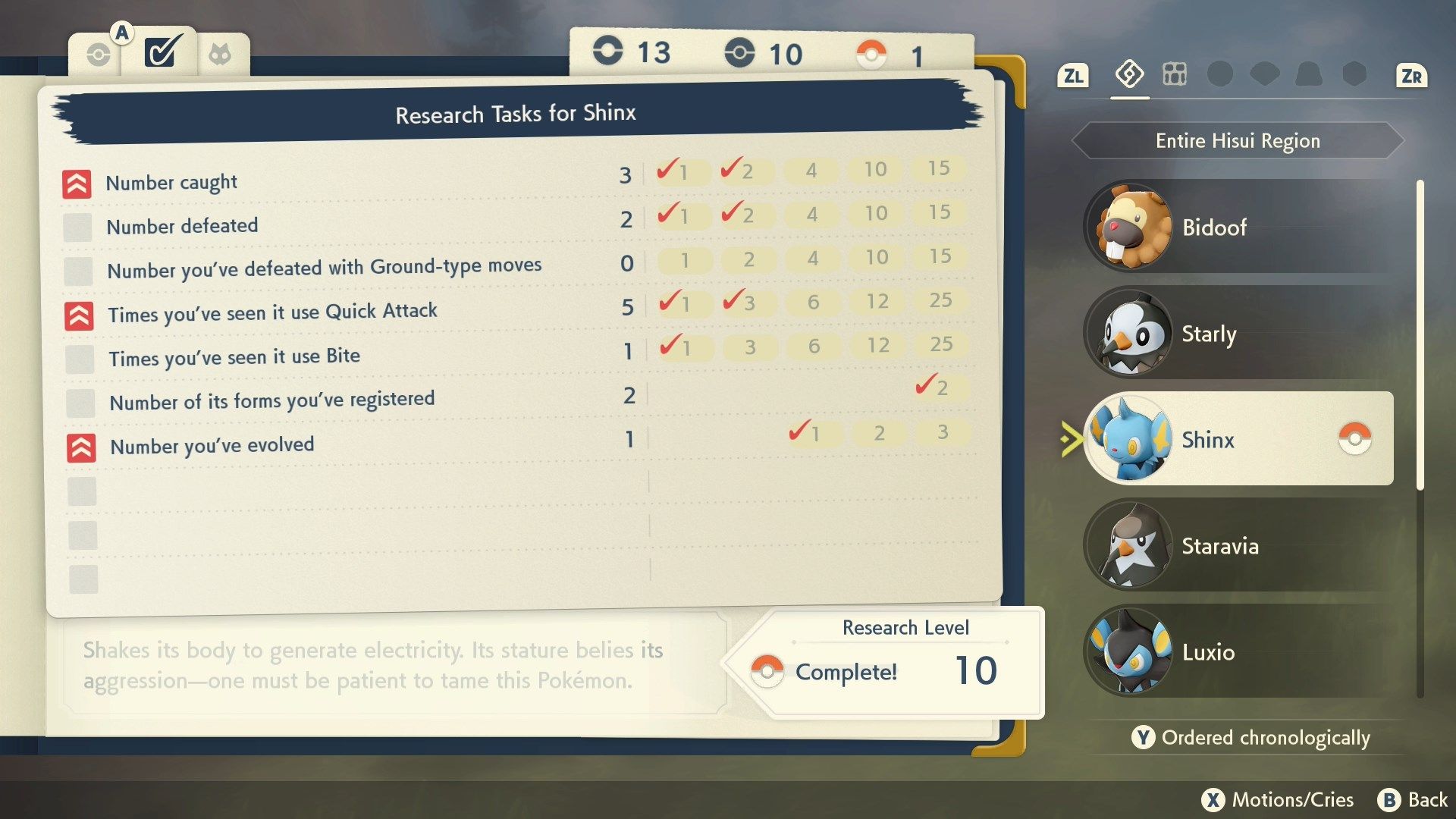
This means that collecting ’em all is now paramount, but there’s more to compiling the premiere Pokédex than just that. When you’re in that first-person-style focus mode (ZL), you can press the down arrow to bring up the relevant page of the Pokédex. This will show you the research tasks assigned for that Pokémon.
These can include basic actions like catching or defeating multiple numbers of that type or more specific things like evolving a subject or observing a move/attack. The end goal is to reach a research level of 10 for each Pokémon encountered, thus completing their entry, but what that means from subject to subject seems fairly arbitrary and more than a little imprecise, even with this grocery list of tasks.
Sights and Sounds of Old Hisui
I feel like this may be a controversial stance, but I genuinely enjoy the music of Pokémon Legends: Arceus. It almost sounds a bit like Disney Magical Worlds for the Nintendo 3DS (and this is not an insult) with its brassy, jazzy arrangements. Perhaps I was expecting something more… traditional to match the faux historical Japanese backdrop, but like many other aspects of the game, I dug it despite the surprise left turn.
Since it was first revealed there has been some online bellyaching about the graphics in Legends: Arceus. Most of it seems to have to do with trees, for some reason, but who am I to tell the internet what to kvetch about?

Personally, I like the visuals in Pokémon Legends as well. Yeah, it does go heavy on that dry brush, Breath of the Wild style, but it serves the setting well. However, there were a couple of occasions when things just didn’t jive. The first was the odd cutscene during which the teeth of my young protagonist looked like they were trying to clip through the rest of his mouth. While mildly disturbing, it was easy enough to forgive.
The other and more damning occasion took place in a darkened environment. Throughout the bulk of this low-light cutscene, both the human characters onscreen had some pretty nasty white outline aliasing. It was impossible to ignore and was honestly the only time in my play-through that the game’s graphics completely took me out of the moment.
It shouted, “Hey, you’re playing a video game!” And while that works for some more meta titles, in this instance, it just served to ruin what was otherwise a flawless level of emersion.
Pokémon Legends: Arceus Is Its Own Thing
As I close this, I’m beginning to suspect that Legends may be a particularly divisive title for the Pokémon fandom. This is because, much like David S. Pumpkins, Pokémon Legends: Arceus is its own thing.
This isn’t a core Pokémon title and, though it certainly toys with those established conventions, it doesn’t feel like one. It doesn’t have the tried-and-true, finely polished interface that one would expect from a brand new Pokémon game. Instead, it’s more likely the first of a very subtle spin-off series, one with a focus on action and exploration and, yes, history.
And if it feels a little rough around the edges, that may be just because it is cut from a different cloth.
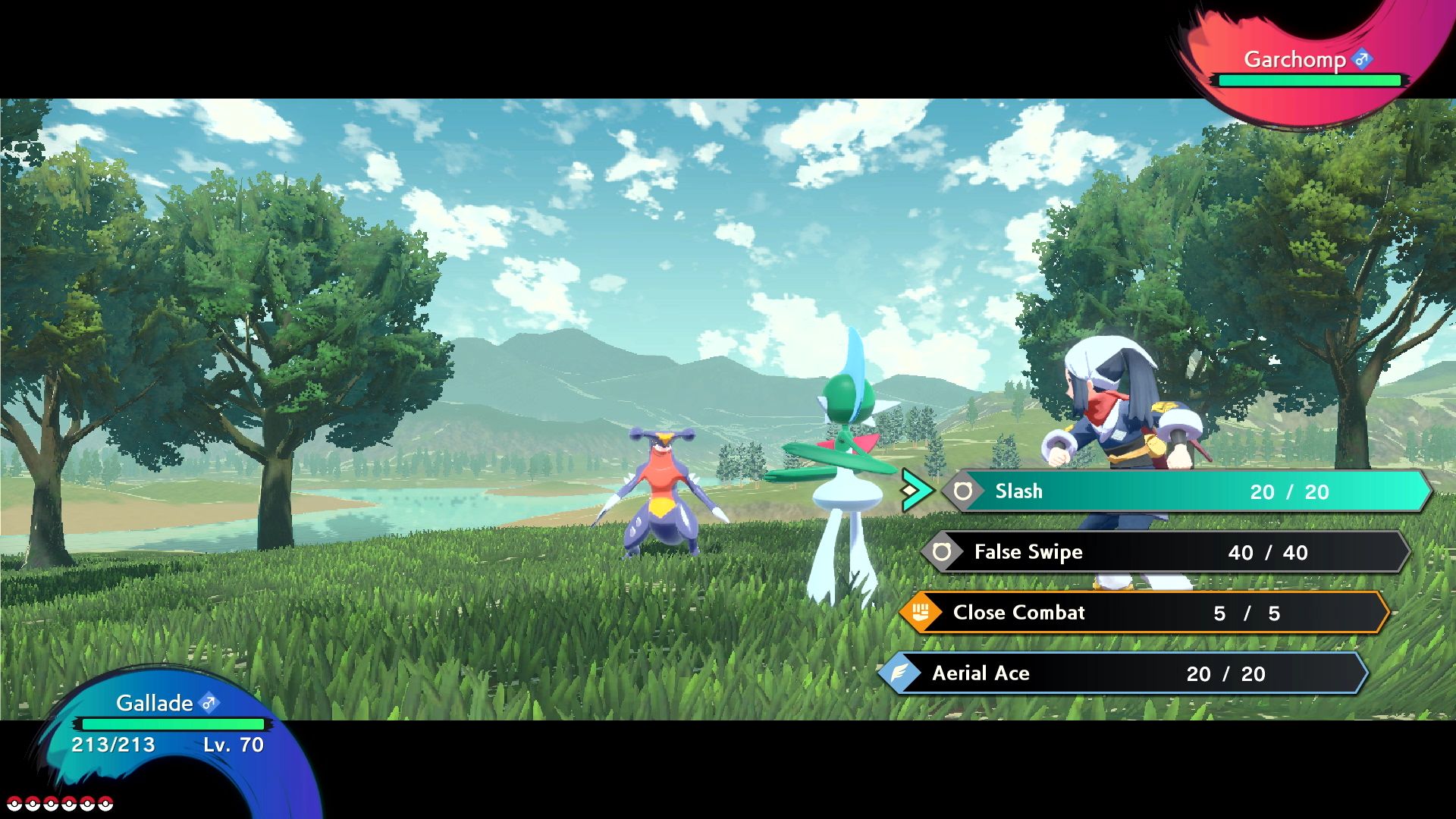
Some of the aspects that bugged me a little—like the floaty, free-roaming camera during Pokémon battles—are simply the kinds of things you find in first-generation games, and that’s what this is. Others, however—such as the item storage and the uneven research tasks in the Pokédex—seem to be intentional aesthetic choices that play into the old-world environment that is Hisui. They reinforce the feeling that we, through our characters, are taking these scary, tentative steps on an unfamiliar journey.
In the end, Pokémon Legends: Arceus sacrifices a bit of its traditional polish in favor of a more immersive pseudo-historical narrative, and in my opinion, it’s all the better for it. If this truly is the debut title from a new line of Pokémon spin-offs that explore this unique game world in the bygone era before Pokémon Red Version and Pokémon Blue, then all I can say is sign me up.
Review materials provided by Nintendo of America. This post contains affiliate links. I had to side-step so many spoilers in this review that I fear I’ve developed shin splints.
